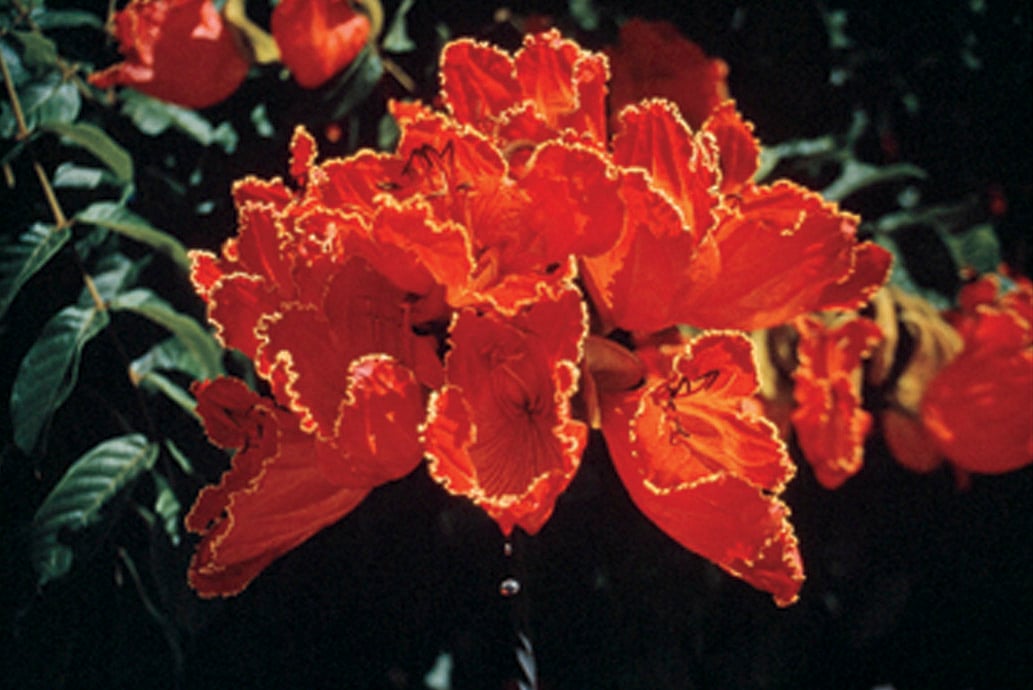

Contributor
- Topics: Archive, Plants You Need
African tulip tree (Spathodea campanulata). Photographs by Don Walker
Extravagant in every way, the African tulip tree (Spathodea campanulata) is known throughout the world as one of the most beautiful of all flowering trees. Widely grown in tropical climates but sensitive to cold, it was once quite rare in cultivation in California. In the past twenty years, however, this “king of flowering trees” has become a popular landscape tree in frost-free areas of Southern California, with a number of fine, mature specimens now thriving in San Diego County.
Native to tropical Africa, the African tulip tree is a member of the bignonia or trumpet vine plant family (Bignoniaceae). It is both horticulturally and botanically distinct, being the only species in its genus. In its native habitat (centering around Lake Victoria) and as a cultivated ornamental in tropical climates, it is a large evergreen tree to fifty feet tall, or more, with flowers throughout the year. When grown in cooler climates such as Southern California, however, it is usually smaller (to around twenty-five to thirty-five feet tall and fifteen to ...
READ THE WHOLE STORY
Join now to access new headline articles, archives back to 1977, and so much more.
Enjoy this article for FREE:
Articles: Calochortophilia: A Californian’s Love Affair with a Genus by Katherine Renz
If you are already a member, please log in using the form below.
Share:
Social Media
Garden Futurist Podcast
Most Popular
Videos
Topics
Related Posts

Ground Up Science for Greener Cities with Garden Futurist Dr. Alessandro Ossola
Spring 2023 Listen to the Podcast here. Alessandro Ossola is a scientist who gets very excited about the challenge of climate change allowing for an

Readying Urban Forests for Climate Realities with Garden Futurist Dr. Greg McPherson
Winter 2023 Listen to the Podcast here. “Going from the mow and blow to a more horticulturally knowledgeable approach to maintaining the landscape. And that

Welcome, Greywater, to the Garden
Summer 2022 Oh, summer: delightful warm air, tomatoes swelling on the vine, fragrant blooms on an evening stroll. When it’s warm and rainless, how is

Big Tree-Data and Big-Tree Data with Garden Futurist Matt Ritter
Summer 2022 Listen to the full Garden Futurist: Episode XV podcast here. We are in an environmental crisis right now in many parts of California










